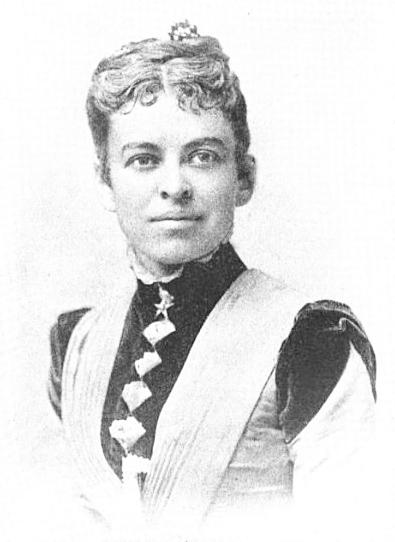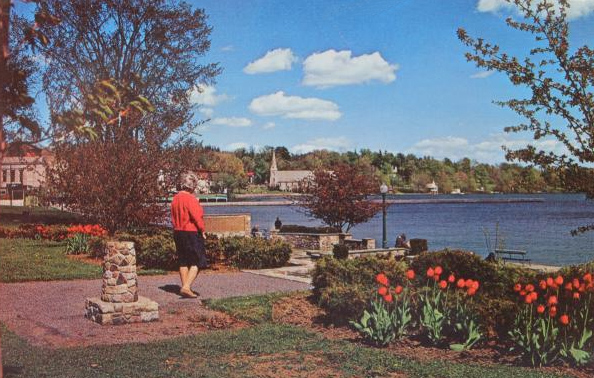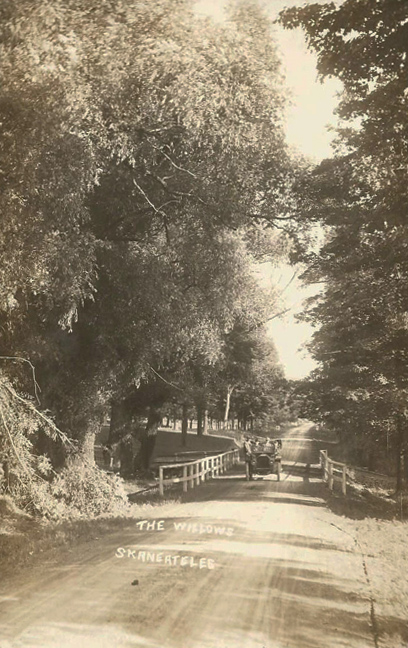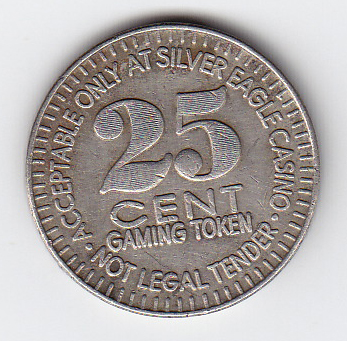In August of 1895, Mrs. Frances J. Barnes, the General Secretary of the Young Woman’s Christian Temperance Union (Y.W.C.T.U.) dedicated a new drinking fountain in the middle of Genesee Street, raising a cup and saying, “To the health of our village in the best of all drinks, cold water.” The fountain was meant to give parched wayfarers an alternative to alcoholic thirst-quenchers, and also included middle and lower basins for horses and dogs. Mrs. Barnes was a prime mover in its placement, and had a long history in both Skaneateles and the cause of Temperance.

Born on April 14, 1846, Frances Julia Allis was the daughter of Caleb and Letitia (Willetts) Allis of the Skaneateles Quaker community. As Clara Chapin put it poetically in Thumbnail Sketches of White Ribbon Women (1895), “Born in Skaneateles, a lovely village on the shores of a beautiful lake in the western part of New York state, she passed a very happy childhood in the shelter of a Christian home.”
She went to school here, and then at the Packer Institute in Brooklyn, where she became involved in Sunday School and mission work. In 1871, while visiting friends in Fishkill, N.Y., she met Willis A. Barnes of Brooklyn, a young lawyer who was there in connection with the construction of the Dutchess and Columbia Railroad. Mr. Barnes was a Quaker, a vegetarian and a non-drinker; Frances married him on September 21, 1871, at the Friends Meeting House in Brooklyn.
Frances E. Willard
In 1874, the couple moved to Chicago, and it was there that Frances J. Barnes met Frances E. Willard, who just the year before had helped to found the Woman’s Christian Temperance Union (W.C.T.U.) and was serving as its Corresponding Secretary. Willard was conducting gospel temperance meetings and visiting jails in Chicago, intent upon “rescuing the perishing.” As Clara Chapin put it, “Mrs. Barnes’ Quaker training had taught her the value of a woman’s voice and opinion, and had prepared her, when the Crusade came, to step into the temperance ranks and lend her influence to that cause.”
Which Frances Barnes did. In Women and Temperance (1883), Willard writes of their first meeting:
“I was holding a meeting in the lecture-room of the Clark Street Church, and had observed a stylish-looking young lady seated beside my good Quaker friend, Mrs. Isabella Jones. ‘I wonder what she came for,’ was in my mind, for temperance was not what it has since grown to be in fashionable circles. What was my delight when this sweet-faced lady came forward with Mrs. Jones, and declared her readiness to ‘do anything she could to help.’ So frankly was this said, and so truly has my ‘younger sister’ (as I have often called her) lived up to those words that, on the instant, she grew dear to me.”
And in Frances Willard’s diary, on January 18, 1875, the entry reads, “Dear Mrs. Barnes, of New York, my little Quakeress, is my main-stay. I don’t know what I could do without her.”
At the national W.C.T.U. convention in Baltimore in 1878, Frances Barnes was named to the committee on young woman’s work. In 1879, Mr. & Mrs. Barnes returned to New York City, and Frances Willard became the President of the W.C.T.U. In 1880, Willard appointed Mrs. Barnes as National Superintendent of the new department on young woman’s work. And in 1891, the Young Woman’s Christian Temperance Union was made a branch of the W.C.T.U. with Mrs. Barnes as General Secretary.
In 1893, Frances Willard wrote, “This department holds its own among many contestants by reason of the genial spirit of its leader, Mrs. Frances J. Barnes, of New York, and the loyalty of her lieutenants. No department is conducted with more ingenuity or faithfulness.” Clara Chapin noted:
“Under her supervision the work has spread with ever increasing ratio and wherever the General Secretary goes her tact and winning ways, as well as her attractive manner of presenting what seems to prejudiced minds a threadbare subject, gain many adherents to the cause she loves. This influence has been especially manifested at parlor meetings where an assemblage of young ladies can be gathered by invitation who would not attend a public temperance meeting, but who come as a compliment to the hostess, and then remain to be introduced to the speaker and to confess the power of her persuasive words.”
Mrs. Barnes also established and edited the “Y” Almanac for several years, an annual compendium of daily Bible verses and temperance quotes. She contributed regularly to Oak and Ivy Leaf, the journal of the Y.W.C.T.U. Jane Stewart, writing in the Skaneateles Free Press (August 20, 1920), said, “Mrs. Barnes gave to this temperance journal the best fruits of her pen. There were temperance stories, songs, poems, and especially those sermonettes, in which the cold type seemed somehow to reflect in part the charm and persuasiveness of her spoken words.”
In 1890 she was a delegate to the annual meeting of the British women’s temperance association in London. In 1891 she was made the World’s superintendent of the Y. W. C. T. U., and under her care it grew to a membership of 30,000 in the United States alone. She signed her letters, “Yours for work,” and gave “royal years of unstinted and unselfish toil to the youth of America.”
It was not always easy. In a letter from New York City, Frances Barnes wrote to Frances Willard, “Think pitifully of me — prayerfully too — for in this roaring Gotham I am the veriest, futile atom of temperance dust.”
But through it all, she managed to spend weeks each summer in Skaneateles, visiting her parents. The family home still stands at 62 West Genesee Street. Known then as “The Pines,” it was built in 1836 by William Fuller. In 1862, Caleb Allis paid $7,000 for the house and 5.8 acres; he added a wing to host Quaker meetings in 1865. This was the house Frances Barnes returned to each summer.
The Pines, circa 1900
In 1883, Frances Willard wrote about the Allis home:
“There is a lovely Quaker home in Skaneateles, N.Y., where temperance workers are always welcome. A lady ‘who has the Gospel in her looks’ presides over this ‘Weary Women’s Rest.’ ‘Saint Letitia’ we call her, as we smooth her soft, bright silver hair, and she looks up with deprecation in those kind eyes; for Quakers don’t believe in titled saints, though their ‘Society’ has furnished more real ones than any other of the same dimensions since time began. A well-to-do merchant, C.W. Allis by name, is joint partner in this establishment, and ‘Daughter Fanny’ is the joy and pride of both.”
(Frances Willard, who had a thing for nicknames, shortened Frances Barnes’ family nickname “Fanny” to “Fan,” and herself preferred to be called “Frank.”)
After the death of Letitia Allis in 1884, Frances Barnes organized a Memorial Christian Temperance Union to honor her mother. The group raised money, but they weren’t quite sure how to spend it. Barnes later wrote, “It was not until the water from our beautiful lake began to be so attractive to people ‘out of town’ that the erection of a drinking fountain was suggested.”
The Fountain, looking east on Genesee Street
And so in August of 1895, Frances Barnes came to be dedicating a water fountain crowned with two gas lamps. In closing her speech, she said:
“So, by presenting this fountain, we wish to give no excuse for any thirsty man or woman to visit a saloon. The world has always needed a sweet, strong, persistent overcoming of evil with good. Our little world of Skaneateles needs the same and we trust this memorial drinking fountain may stand as a perpetual emblem of the golden rule. Our American poet, Longfellow, wrote an inscription for a fountain on the Isle of Wight [on High Street in Shanklin], which we may also appropriate in closing this presentation:
O Traveller, stay thy weary feet;
Drink of this fountain, pure and sweet;
It flows for rich and poor the same.
Then go thy way, remembering still
The wayside well beneath the hill,
The cup of water in His name.”
Frances Barnes’ father continued to live at “The Pines” with Frances’ Aunt Sarah (her mother’s sister, Sarah (Willetts) Barker) serving as the Lady of the House. Frances Willard continued to visit, often with Anna Adams Gordon, her private secretary and companion, who characterized the Allis house as “a home full of memory’s pictures, the charming colonial country seat of one very dear.”
Anna Adams Gordon
Caleb Allis died in May of 1897 and left the house to Frances Barnes and to his son, Thomas Valentine Allis. In September and October of 1897, Frances Willard and Anna Adams Gordon paid their last visit to Skaneateles, hosted by Sarah Barker. While here, they addressed a children’s meeting at the Presbyterian church at the invitation of the Rev. O.L. White. Then they traveled on to speaking engagements in Buffalo and Toronto.
Frances Willard died in February of 1898; she had been the president of the W.C.T.U. for 19 years. Anna Adams Gordon served as Vice President from 1898 to 1914, and then president until 1922, when she became president of the World Women’s Temperance Union.
Frances J. Barnes resigned from all of her Y.W.C.T.U. offices between 1898 and 1901, suffering from a serious illness, characterized in one account as a nervous breakdown. In the words of a niece, she “appeared much of an invalid the rest of her life.” She did manage to make brief, and rare, speaking appearances for a few more years. In 1904 and 1906, she sold her properties in Skaneateles.
The water fountain was already gone by that time, displaced in 1901 by the tracks of the new trolley line that ran from Auburn to Syracuse. A “perpetual emblem” for Temperance and her mother’s memory, it had lasted just six years.
Frances Barnes died in June of 1920, at Dr. Alvin Wadsworth’s sanitarium in South Norwalk, Connecticut, after an illness of two years. Accompanied by two of her nieces, her body was returned to Skaneateles. Her funeral service was held at the Friends’ meeting house here and her remains were buried at Lake View Cemetery.
A great goal of the Temperance movement, Prohibition, a national ban on the sale, production and transportation of alcohol, went into effect on January 16, 1920, but ended on December 5, 1933. The W.C.T.U. is still active.
Women and Temperance: Or, the Work and Workers of the Woman’s Christian Temperance Union (1883) by Frances E. Willard
A Woman of the Century: Fourteen Hundred-Seventy Biographical Sketches Accompanied by Portraits of Leading American Women in All Walks of Life, Edited by Frances E. Willard and Mary A. Livermore Assisted by a Corps of Able Contributors (1893)
Thumbnail Sketches of White Ribbon Women (1895) by Clara Chapin
Images of the drinking fountain, “The Pines,” and the W.C.T.U. ruler courtesy of the Skaneateles Historical Society.
My thanks also to Wikipedia, Google Books, and the indispensable Fulton index of 23 million New York newspapers.
The Allis house, “The Pines,” circa 1907, in a postcard sent by Mrs. Theodore Specht.




















